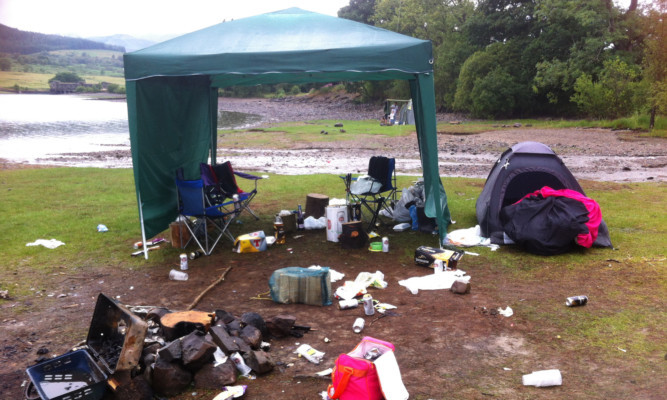Plans to restrict camping around several lochs in the Loch Lomond and the Trossachs National Park have been approved by the Scottish Government, sparking criticism from outdoor organisations.
The new by-laws will introduce three “camping management zones” at West Loch Lomond, Trossachs West and Trossachs North.
The proposal was put forward by the park authority, with the aim of addressing damage caused by overuse and antisocial behaviour around its busiest lochside locations.
It said the new zones only cover 3.7% of the national park.
But the move has already been criticised by Ramblers Scotland, the Scottish Sports Association and the Mountaineering Council of Scotland.
They said that while they acknowledged there were problems, they did not believe the new laws were necessary, and could harm access rights.
Outdoors author Cameron McNeish has also criticised the decision, saying: “The new bylaws will criminalise the innocent, confuse visitors and drive the real culprits into other areas.”
The seasonal by-laws will come into force in March 2017, and will apply from March 1 to September 30 each year.
Loch Lomond and the Trossachs National Park Authority convener Linda McKay, said: “These carefully considered proposals reflect the views of a wide body of interests and demonstrate the delicate balance that needs to be struck when caring for our national parks.
Today's decision by the Env Min on the Loch Lomond bylaws is the wrong one. https://t.co/hBpFM55ttb
— Cameron McNeish (@CameronMcNeish) January 26, 2016
“We firmly believe that the combination of improved camping facilities alongside management of camping pressures on our loch shores will encourage people to enjoy everything that’s great about Scotland’s outdoors, while protecting Loch Lomond and the Trossachs for this generation, and the next.”
The new laws will see the introduction of 300 low-cost camping places. These will comprise both new and improved camping facilities, and camping permits to allow “informal lochshore camping at sustainable levels”.
They will also prevent “inappropriate use of public lay-bys as encampments by caravans and campervans”.
Kim Atkinson of the Scottish Sports Association said: “Our Outdoor Pursuits Group (OPG) members have always acknowledged that there are significant problems arising from certain roadside camping activities which take place along loch shores within the national park.
“However, our OPG remains unconvinced that by-laws are the solution, and remains concerned that they will undermine Scotland’s much-prized access legislation.”
Jess Dolan, director of Ramblers Scotland, said: “This is a sad day for everyone who holds Scottish access rights dear.
“The national park itself has admitted that most of the anti-social problems arising from some camping activities are caused by a lack of infrastructure and enforcement of existing legislation.”
David Gibson, of the Mountaineering Council of Scotland, said: “While the decision by the minister to approve by-laws is most disappointing, she does acknowledge that steps must be taken by the park authority to manage lochside issues more effectively.
“We felt that Police Scotland and the park authority already had those powers and that the new by-laws were completely unnecessary.”
